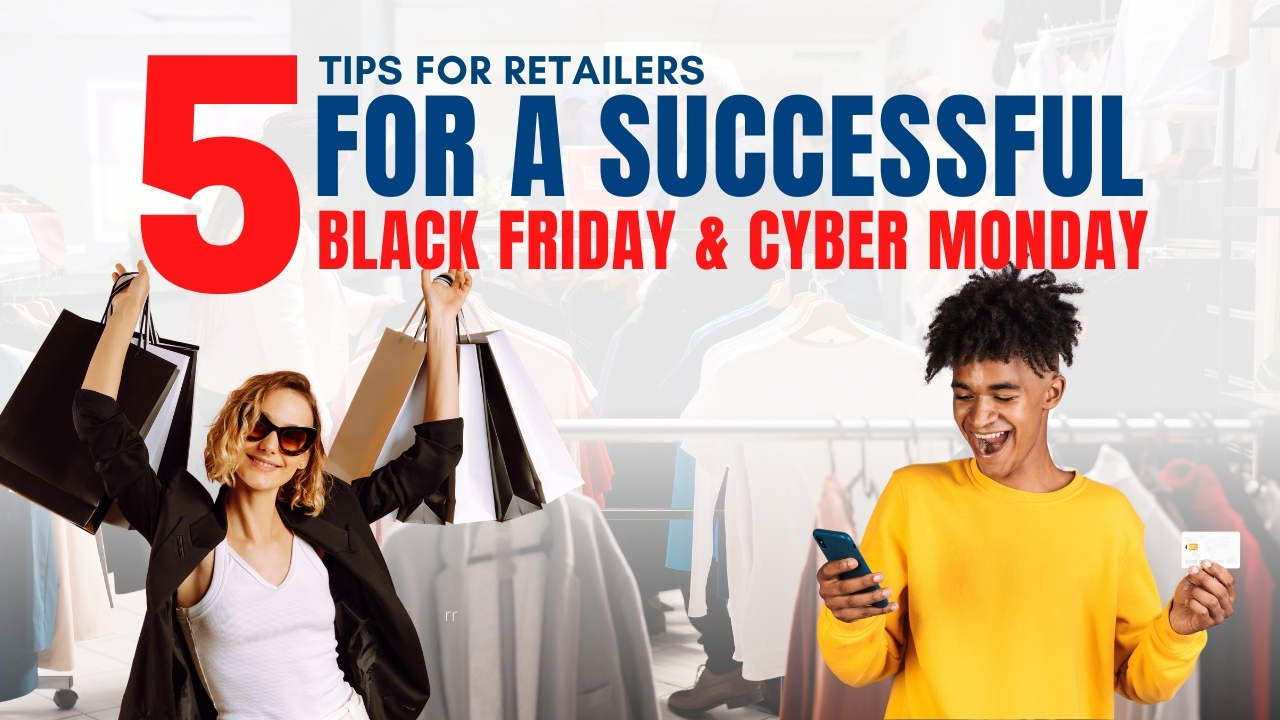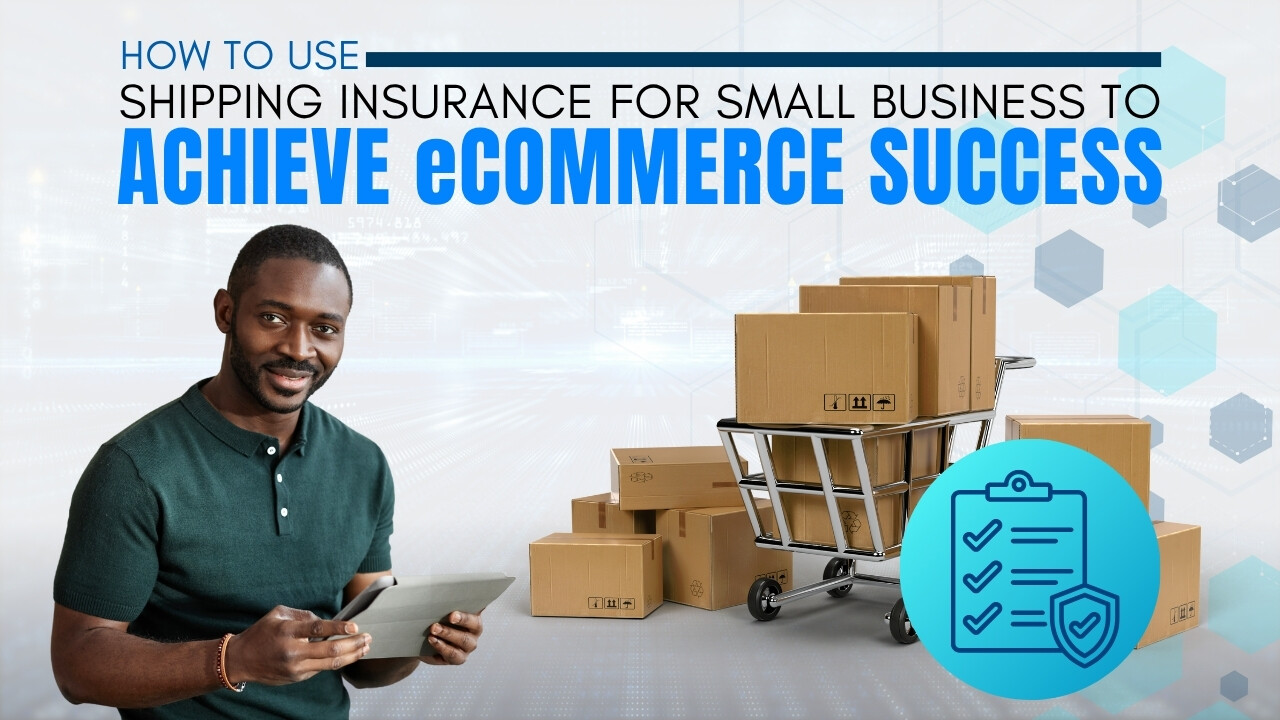Blog
5 Tips For Retailers For A Successful Black Friday & Cyber Monday
November 27, 2024 / 7 minute read / By Nick Borowitz

Blog

The retail landscape continuously transforms, especially during the holiday season when every retailer kicks operations into high gear.
While you can read a million different guides telling you how to sell every piece of merchandise in your store, we will keep it simple and share five tips for retailers on how to successfully conduct Black Friday and Cyber Monday.
To help retailers from small mom-and-pop stores to the largest retailers worldwide, here are five tips for retailers for a successful Black Friday and Cyber Monday.
And to drive home the importance of each of the five tips, here’s a quick history lesson on Black Friday and Cyber Monday!
With the advent of eCommerce, which makes it possible to shop 24/7, retailers started Black Friday sales earlier and earlier every year. Then, in 2005, Ellen Davis of the National Retail Federation and Scott Silverman first coined the term “Cyber Monday” in a press release titled “Cyber Monday Quickly Becoming One of the Biggest Online Shopping Days of the Year.”
Once that press release hit the World Wide Web, it’s been an extravaganza of merry chaos every year. However, to maximize that lucrative chaos, today’s successful retailers need to embrace an omnichannel approach that meets customers wherever they prefer to shop.
Let’s get into it! Here’s your comprehensive guide to maximizing sales during this crucial holiday period.
When the winter holiday arrives, the modern consumer expects more than discounts. Today’s successful incentive strategy must blend traditional promotions with innovative approaches that reflect current shopping behaviors and values.
The key is creating a sense of exclusivity and value beyond simple discounts. Consider implementing time-limited offers during specific hours to create urgency and drive traffic during traditionally slower periods.
Offering diverse payment options is crucial for in-store and online transactions. Modern retailers can increase sales by accepting traditional methods like cash and cards alongside digital wallets and mobile payments. Retailers receive full payment by implementing flexible payment solutions such as ‘buy now, pay later’ services and ‘buy online, pickup in-store’ options. At the same time, customers benefit from manageable installment plans ranging from bi-weekly splits to extended financing over 3-48 months.
Your eCommerce presence needs to be more than functional—it needs to be exceptional. With over 70% of Black Friday purchases happening on mobile devices, a seamless digital experience is non-negotiable.
Ensure your website offers a mobile-first design with fast loading times and intuitive navigation. Ensure your website’s SEO is fully updated and your information is easy to find. Enhancing your website SEO is necessary to attract customers and improve online visibility. This is particularly effective when customers perform ‘near me’ searches or look for merchandise similar to what you sell. There are four main types of SEO to keep in mind.
Conduct thorough load testing to handle traffic spikes without performance issues. Remember to test your entire digital infrastructure before the holiday rush begins. Create test orders, verify email notifications, and ensure your checkout process works flawlessly across all devices and platforms.
Should your website go down, or worse, your credit card and payment processing hardware cease functioning, processing payments will become downright impossible. Extra pieces can be the difference between having a successful holiday season with high conversions.
Read More: What is Metaverse Retail?
Modern marketing requires a sophisticated blend of personalization and automation across multiple channels. Your approach should feel personal while being scalable and easy to manage.
Using a digital marketing program built into your CRM can be set to use automated triggers in the software to send specific email messages suited to individual customer needs. These can look like:
| Purpose | |
|---|---|
| Abandoned Cart | Encourages customers to return items left in their digital shopping carts to complete the purchase. |
| Previously Viewed Item | Intrigues customers by displaying the last item they have viewed on your eCommerce website to encourage a purchase. |
| Book Club and Membership Welcome | Serves as both a friendly hello and confirmation of enrollment into your digital marketing campaigns. |
| Loyalty Rewards Reminders | Loyalty Rewards Reminders Emails are sent during automated periods to “remind” customers about remaining reward points or offers of point rewards. |
| Product Review | Requests the customer to leave a product review on your website or web search engines like Google and Bing. |
| Top Spender | Sends emails to customers with higher average order values to encourage them to return to your website or store and make more purchases. |
Coordinate email, SMS, push notifications, and social media marketing messages. Set up sophisticated cart abandonment flows with progressive discounts.
The key is to make customers feel personally valued while maintaining operational efficiency. Use data analytics to segment your audience and create targeted campaigns that resonate with specific customer groups.
Make signing up for reward and loyalty clubs easy. Set up QR codes around the store or offer email sign-up at the register and credit card terminals. It is more enticing for customers to participate when you pair it with redemption offers, like spending $80 and getting $80 as a specific reward.
Modern inventory management goes beyond just stocking shelves. Today’s successful retailers need easy methods to gain insight into their inventory.
This is quickly executed when using an integrated retail point of sale system. The store’s inventory is connected across all sales channels, meaning when a sale occurs on one channel, the system can apply it to the others.
Tools like scanner devices, label printers, automated programs that run frequent updates, and fulfillment optimization are essential for a streamlined inventory process. By integrating the different systems that monitor inventory, the benefits are numerous:
| Integration Type | Benefit |
|---|---|
| Catalog Search | View vendor catalogs directly through the point of sale in real-time to access millions of active and out-of-print books from thousands of publishers and music, games, and other products. |
| Product Catalogs | Import all the products you want to sell directly within your POS database, integrating with your suppliers to ensure the most comprehensive and accurate information. |
| Electronic/Automated Purchasing | Automate your purchasing for store replenishment based on minimum/maximum levels within the retail software and send POs electronically. |
| Connected Inventory | Access real-time inventory directly from the point of sale across all of your stores, sales channels, and suppliers. |
| Vendor Stock | Use the point of sale to offer any product the vendor has in stock. |
| Special Orders | Automatically generate and send a particular order to the vendor to fulfill via drop shipping. |
Remember to stock up on essential supplies like gift cards, receipt paper, and packaging materials. Consider sustainable packaging options to appeal to environmentally conscious consumers.
The final step in the customer journey needs to be as frictionless as possible, whether online or in-store. Retailers want customers to keep moving through the checkout process, so making the shopping journey seamless is essential.
Using mobile kiosks throughout a store makes it easy for customers to browse products before interacting with staff. Customers using an eCommerce website purchase want an equally smooth experience where it’s easy to move through sections, pages, and categories in a way that makes sense.
This expediting of the checkout process is achievable in several ways:
| Technology | Purpose |
|---|---|
| Mobile Windows-Based POS Tablets | Employees can assist customers right on the floor. If a question arises, they can quickly look up the information needed. |
| Mobile Credit Card Readers | Card reader attachments for mobile devices can be used in-store and brought to off-site trade shows for sales processing. |
| Expanded Payment Options | Not all customers use cash, so it's important to be able to accept cashless payments like taps, mobile payments, and other digital wallets. |
| Customer Information Capture | Customers can sign up for loyalty rewards and memberships on mobile tablets, offering more opportunities for future conversions. |
For in-store operations, consider using mobile POS systems to reduce lines and enable staff to process transactions anywhere in the store. Have backup payment systems ready to prevent any downtime during peak periods.
Offer multiple fulfillment options, including BOPIS (Buy Online, Pick up In-Store) and curbside pickup for customers to pick up their orders. If you ship merchandise and need to get products to customers who may not be in an immediate delivery zone, this can help them cut through the lines of holiday rushes. Partner with reliable drop-shipping providers to extend your product range without holding inventory.
As you implement these strategies for 2024, keep an eye on emerging trends that will shape the future of holiday retail.
Web3 technologies, VR shopping experiences, and voice commerce are on the horizon. Sustainable practices and AI-powered personalization will become increasingly important.
Consider how these innovations might fit into your long-term strategy while focusing on executing this year’s plans effectively.
If you have any good tips, please share them with us by emailing marketingteam@celerant.com. We will select the best one and include as a bonus tip (along with your name and company).
Success during the holiday season requires careful planning and flawless execution. Start implementing these strategies well before the holiday rush to ensure everything runs when it matters most. May your 2024 holiday season be your most successful yet!
 Is shipping insurance worth it, or just another line item on your budget? This guide breaks it all down… |
 The eCommerce landscape is a race, which means protecting shipments with insurance is not just smart,… |